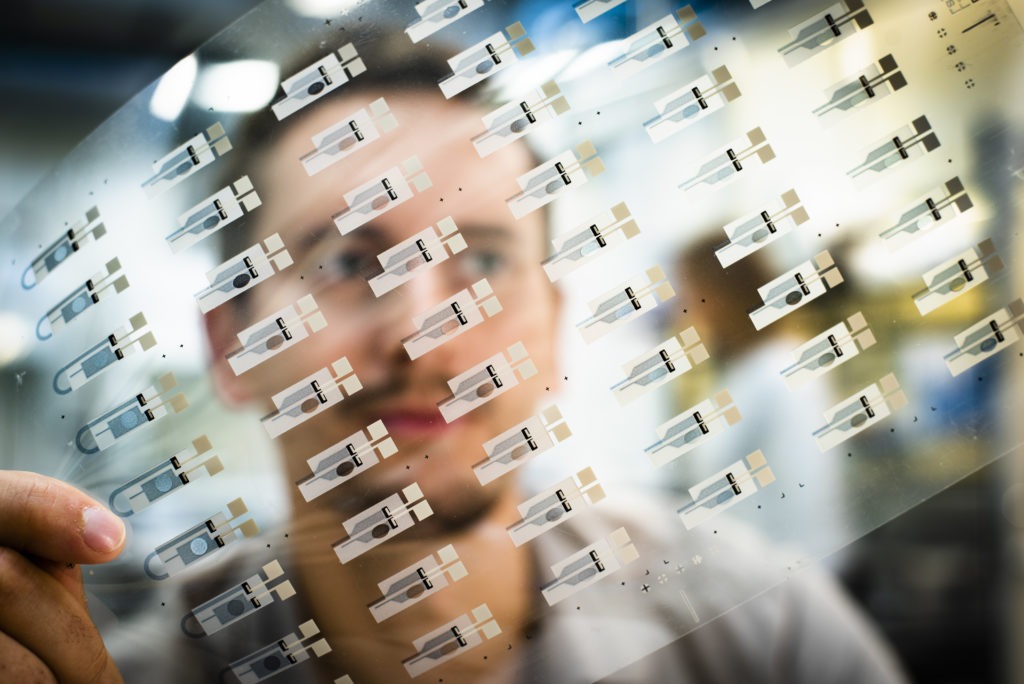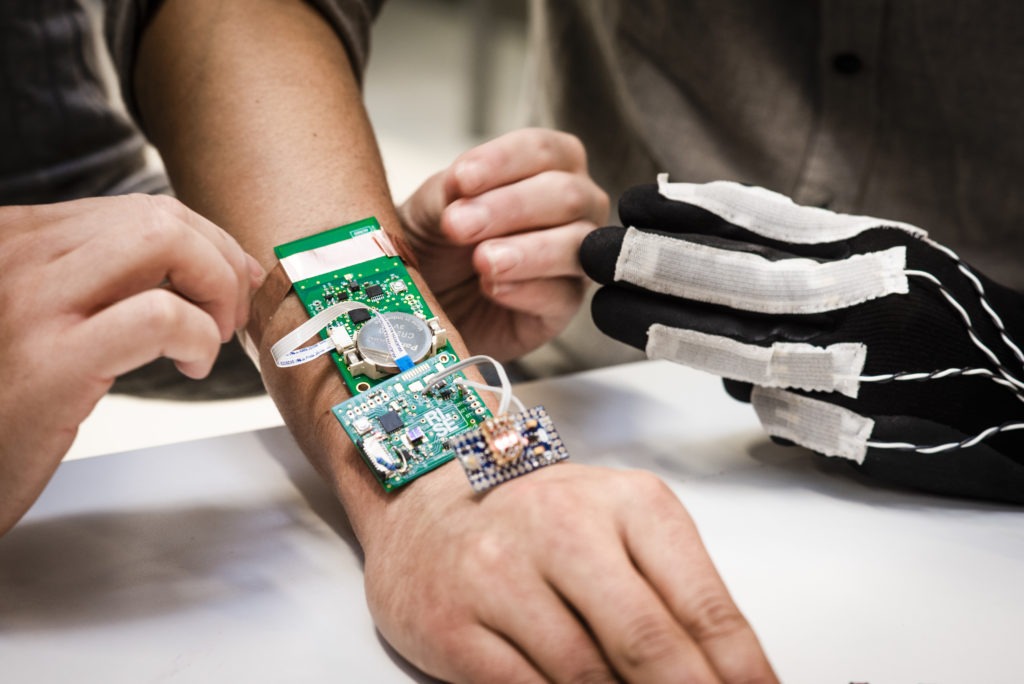Intrabody networks
Interfacing with the human body
Organic Electronic Ion Pumps (OEIP) are microdevices which allow for precise, localized, and minimally disruptive machine-to-cell interfacing. The Ion Pump is a polymer-based delivery system exhibiting high spatial, temporal, and dosage precision. Based on electrophoretic transport of positively charged species, the OEIP can deliver an array of biologically relevant substances without fluid flow, thus eliminating convective disturbance of the target system’s environment.
The Biocom lab is a collection of activities aimed at interfacing with the human body; sensors on the skin, sensors inside the body, controllable networks inside the body and feedback systems to regulate medication precisely. One area which is investigated is epilepsy and the possibility to detect and prevent seizures.
Recent findings and articles:
- Biocom lab
- A decade of Iontronic Delivery Devices
- The Integrated Sensor Platform
- Speaking to cells (Swedish)
- Ion pump for pain control (Swedish)
The ionic basis of electrical signals (courtesy of Encyclopedia Brittanica)
Ions are atoms or groups of atoms that gain an electrical charge by losing or acquiring electrons. For example, in the reaction that forms salt from sodium and chlorine, each sodium atom donates an electron, which is negatively charged, to a chlorine atom. The result is sodium chloride (NaCl), composed of one positively charged sodium ion (Na+) and one negatively charged chloride ion (Cl−). A positively charged ion is called a cation; a negatively charged ion, an anion. The electrical events that constitute signaling in the nervous system depend upon the distribution of such ions on either side of the nerve membrane. Underlying these distributions and their change are crucial physical-chemical principles.


